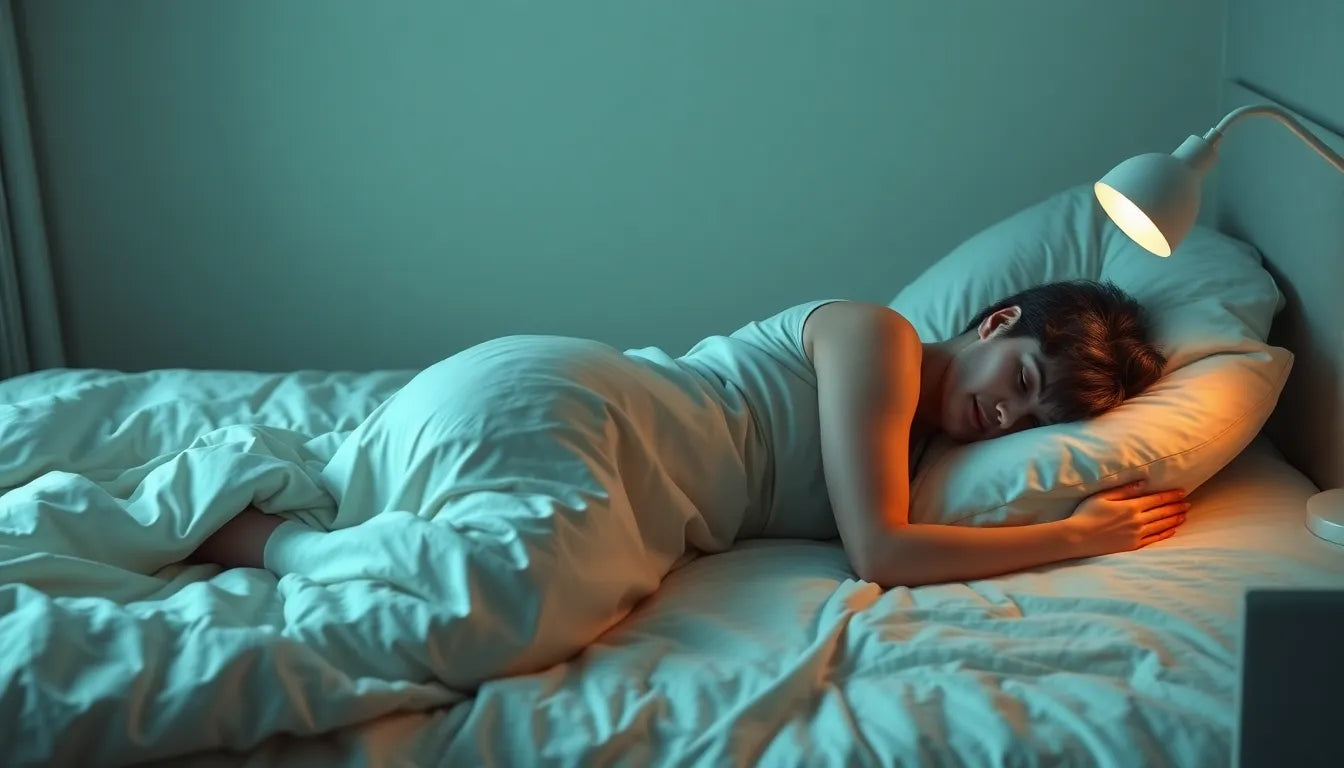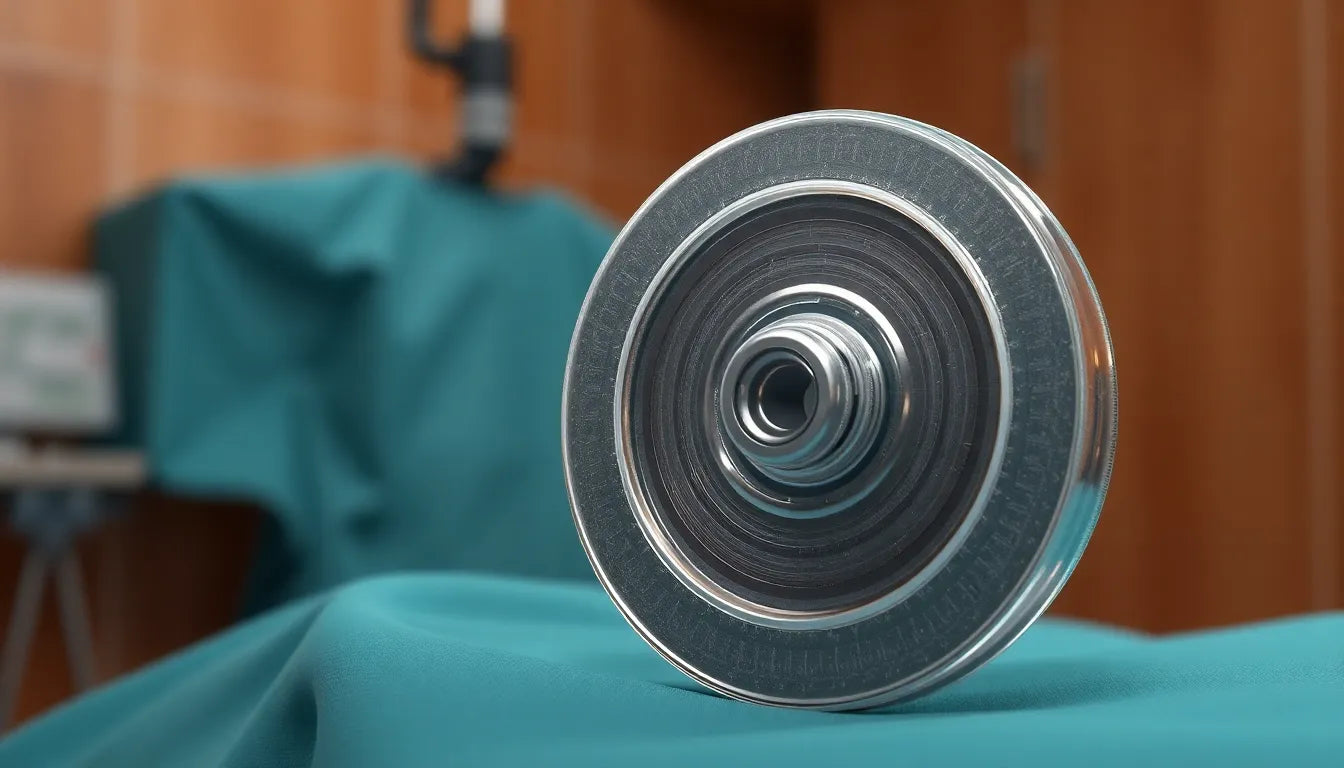Understanding how to sleep with a herniated disc at L5-S1 is crucial for anyone dealing with this common spinal issue. A herniated disc occurs when the soft inner gel of a spinal disc pushes through a crack in the tougher exterior casing. This can happen in various parts of the spine, but the L5-S1 region, located at the lower end of the lumbar spine, is particularly susceptible due to its role in supporting much of the body's weight and its involvement in various movements.
Individuals with an L5-S1 herniated disc often experience a range of symptoms, including lower back pain, sciatica, and leg weakness. These symptoms can significantly impact daily life, making even simple tasks challenging. One of the most effective ways to manage these symptoms and promote healing is by paying attention to sleep positioning. Proper sleep positioning can help alleviate pressure on the affected disc, reduce pain, and support the body's natural healing processes.
The impact of sleep on recovery
Sleep plays a vital role in the recovery process for those with an L5-S1 herniated disc. Poor sleep can exacerbate pain and hinder recovery by increasing inflammation and reducing the body's ability to repair itself. When you don't get enough quality sleep, your body's stress response is triggered, leading to increased pain sensitivity and a prolonged healing process.
Conversely, good sleep can help reduce inflammation and improve overall well-being. During sleep, the body releases growth hormones that aid in tissue repair and muscle growth, which are essential for recovery from a herniated disc. Additionally, sleep helps regulate the body's immune response, further supporting the healing process.
In this blog post, we will explore practical sleep solutions specifically tailored for those with L5-S1 herniated discs. By understanding the importance of sleep and implementing effective sleep strategies, you can manage your symptoms more effectively and support your body's natural healing abilities. Whether you're struggling with finding the right sleeping position or looking for ways to enhance your sleep environment, this guide will provide you with the insights needed to rest easy and wake up feeling more refreshed.
Recommended sleeping positions for L5-S1 herniated discs
Finding the right sleeping position is essential for those suffering from an L5-S1 herniated disc. Proper positioning can significantly reduce pain and support recovery by maintaining spinal alignment and minimizing pressure on the affected area. Here are some recommended sleeping positions that can help you achieve a restful night's sleep.
Back sleeping position
Sleeping on your back is often considered one of the best positions for individuals with an L5-S1 herniated disc. This position helps maintain the spine's natural curve and evenly distributes body weight, reducing the risk of nerve pinching. To enhance comfort and support:
- Place a pillow under your knees to help maintain the spine's natural curvature.
- Use a small pillow or rolled-up towel under your lower back for additional support.
- Consider using a wedge-shaped pillow to elevate your legs and further reduce pressure on the herniated disc.
Side sleeping position
Side sleeping is another beneficial position for those with an L5-S1 herniated disc. It helps keep the spine aligned and reduces stress on the hips. To optimize this position:
- Place a pillow between your knees to ensure proper alignment and reduce hip stress.
- Consider a rolled-up towel between your waist and the mattress for added support.
- Lie on the side where you don't experience pain to minimize discomfort.
Fetal position
The fetal position is often the most comfortable position for individuals with herniated discs. It involves lying on your side with your knees pulled up toward your chest. This position reduces spinal bending and opens up the joints, providing significant relief from pain.
Positions to avoid or modify
While certain positions are beneficial, others can exacerbate symptoms and should be avoided or modified. Stomach sleeping, for instance, is generally not recommended as it can lead to spine misalignment. If you must sleep on your stomach, consider the following adjustments:
- Place a pillow under your stomach and hips to help align your spine.
- Avoid turning your head to one side, as this can strain your neck, back, and shoulders.
Daytime posture management: sitting recommendations
Managing your posture during the day is also crucial for alleviating symptoms associated with an L5-S1 herniated disc. Proper sitting techniques can help maintain spinal health and reduce disc pressure:
- Maintain the natural S-curve of your back when seated to support spinal alignment.
- Use a pillow or rolled-up towel for lower back support.
- Consider using an ergonomic chair or sitting on an exercise ball to promote better posture.
- Elevate your feet on a block to reduce disc pressure, which can be comparable to standing.
By incorporating these recommended sleeping positions and daytime posture management techniques, individuals with an L5-S1 herniated disc can experience significant relief from pain and discomfort. These strategies not only support the healing process but also enhance overall well-being, allowing for better rest and recovery.
Enhancing sleep comfort with ergonomic aids
For those suffering from an L5-S1 herniated disc, enhancing sleep comfort with ergonomic aids such as pillows and mattresses can significantly improve sleep quality. The right mattress should provide adequate support to maintain spinal alignment while relieving pressure points. Consider a medium-firm mattress, which is often recommended for spinal support. Memory foam or latex mattresses can offer additional comfort by contouring to the body's shape.
Pillows also play a crucial role in maintaining proper alignment. A cervical pillow can support the neck during back sleeping, while a body pillow can help maintain alignment when sleeping on the side. For those who prefer the fetal position, a knee pillow can reduce strain on the hips and lower back.
Biomechanics of sleep positions
Understanding the biomechanics of sleep positions can aid in reducing pressure on the L5-S1 disc. Proper alignment involves keeping the spine in a neutral position, which minimizes stress on the vertebrae and discs. Back sleeping with a pillow under the knees helps maintain the natural curve of the spine, while side sleeping with a pillow between the knees can prevent the spine from twisting.
The fetal position, achieved by curling up on one side with knees drawn toward the chest, can open up the spinal joints and reduce bending, providing comfort for many with herniated discs. Each position aims to distribute body weight evenly, reducing localized pressure on the L5-S1 disc.
Incorporating personal experiences
Personal experiences and testimonials can offer valuable insights into effective sleep strategies for managing L5-S1 herniated disc symptoms. For instance, one individual found relief by switching to a medium-firm mattress and using a wedge pillow to elevate their legs, which reduced nighttime discomfort. Another person reported that placing a rolled-up towel under their lower back while sleeping on their side significantly alleviated morning stiffness.
These experiences highlight the personalized nature of finding the right sleep solution. It's important to experiment with different positions and aids to discover what works best for your body and specific condition.
Frequently Asked Questions
What is the best sleeping position for a herniated disc at L5-S1?
The best sleeping positions for an L5-S1 herniated disc are typically back sleeping and side sleeping. Back sleeping with a pillow under the knees helps maintain spinal neutrality, while side sleeping with a pillow between the knees keeps the spine aligned. The fetal position is also highly recommended for comfort.
Can a mattress affect my herniated disc symptoms?
Yes, a mattress can significantly impact herniated disc symptoms. A medium-firm mattress is often recommended as it provides the necessary support to keep the spine aligned while relieving pressure points. Memory foam and latex mattresses can offer additional comfort by contouring to the body's shape.
Should I use a special pillow if I have a herniated disc?
Using a special pillow can help maintain proper spine alignment and alleviate discomfort. Cervical pillows support the neck for back sleepers, while knee or body pillows can aid side sleepers by maintaining alignment. Consider experimenting with different pillow types to find what offers the most relief.
How long should I try a new sleep position before deciding if it works?
It is advisable to try a new sleep position for at least a week to allow your body to adjust. If discomfort persists, consult a healthcare professional for personalized advice. They can provide guidance on adjustments or recommend other strategies to improve your sleep and manage symptoms.
By implementing these sleep strategies and utilizing ergonomic aids, individuals with an L5-S1 herniated disc can find relief and improve their overall well-being. Remember to consult healthcare professionals for tailored advice and continue experimenting to discover the most effective solutions for your needs.
Sources
- NY Bone and Joint. "The Best Ways to Sit and Sleep If You Have a Herniated Disc."
- New York Spine Institute. "Sleeping with a Herniated Disc."
- YouTube. "Best Way to Sit or Sleep With an L4 L5 or L5 S1 Disc Bulge."
- Pain and Spine Institute. "How To Sleep With a Herniated Disc - 4 Best Sleeping Positions."
- Florida Surgery Consultants. "How to Sleep With a Herniated Disc."
- Pain and Spine Specialists. "Best Sleeping Position for Herniated Disc."
- Fitness4BackPain. "The Best Sleeping Position For Herniated Discs & Bulging Discs."
- Better Health Alaska. "How to Get to Sleep (And Stay Asleep) With a Bulging Disc."


















